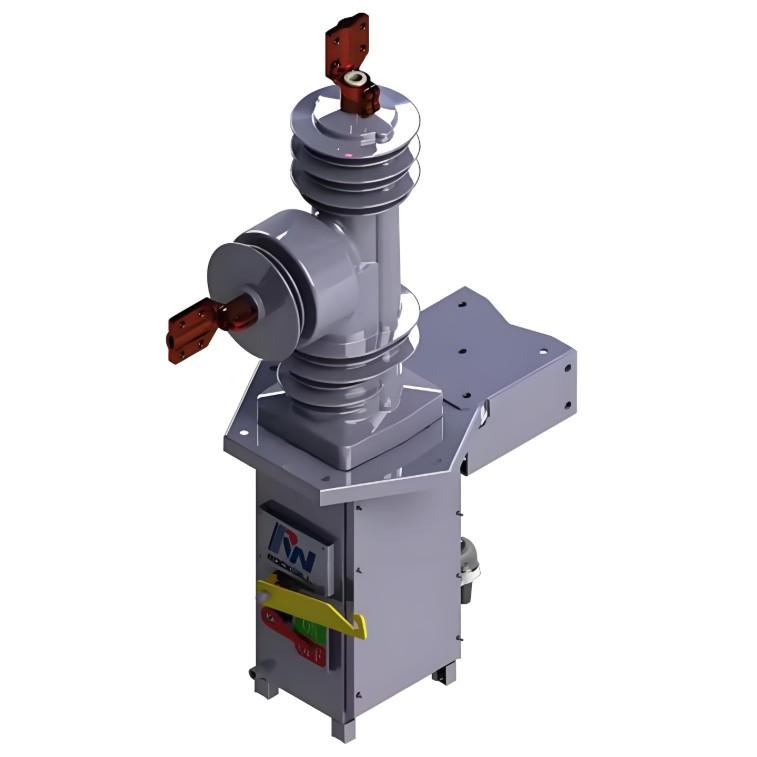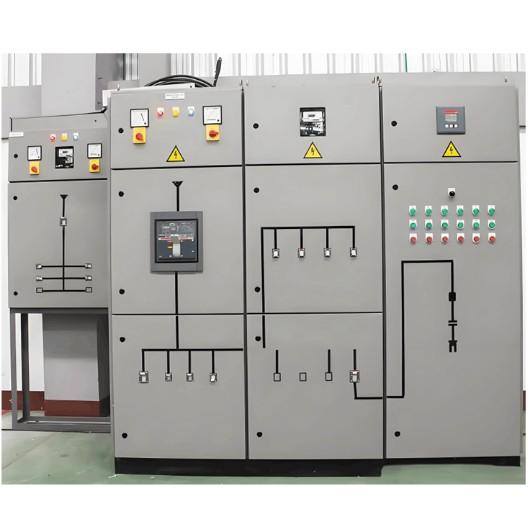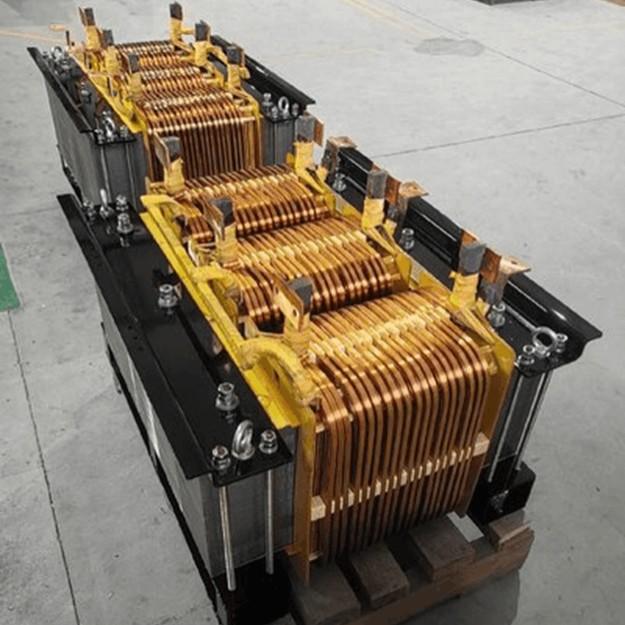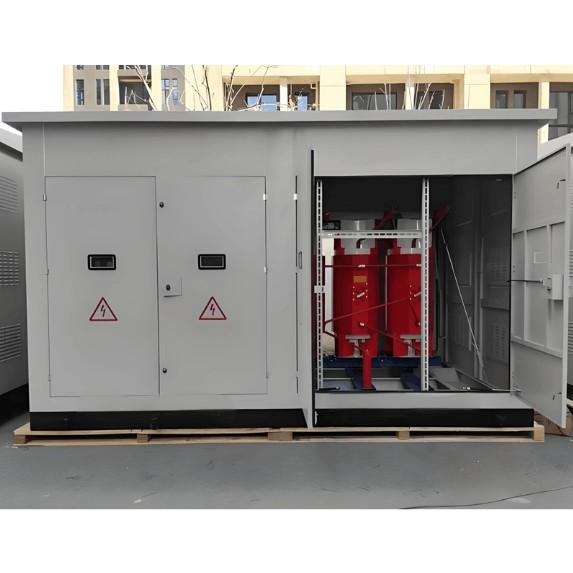I. Taighde agus Cúlra
Níos Mó Measanna ar Chórais Fhuinnimh
Tá athruithe ar struchtúr na fuinnimh ag cur níos mó measanna ar chórais fhuinnimh. Tá córais fhuinnimh traidisiúnta ag dul go dtí córais fhuinnimh nua-aoise, agus tá na príomhéagsúlta idir iad seo leanas:
| Dimensión |
Córas Fhuinnimh Tráidisiúnta |
Córas Fhuinnimh Nua-aoise |
| Forma Bonn Teicniúil |
Córas Meicniúil Eilechtromagach |
Domhnaithe ag Máiníní Sioncronacha agus Táirgeadh Eileachtach |
| Forma Lárthach |
Príomha Gnéithe Fuinnimh Teo |
Domhnaithe ag Gnéithe Fuinnimh Gaoithe agus Fotovoltaice, le Módaí Ionchruinnthe agus Dibhriste |
| Forma Lárthach Gréasáin |
Gréasán Mór Amháin |
Comhbhaint Gréasáin Mhóir agus Micrégréasáin |
| Forma Lárthach Úsáideora |
Úsáideoirí Fuinnimh Amháin |
Úsáideoirí mar Úsáideoirí agus Táirgeoirí Fuinnimh |
| Mód Comhréiteachais Fuinnimh |
Táirgeadh Leanann Tuairisc |
Idirghníomhaíocht idir Foinse, Gréasán, Tuairisc agus Stóráil Fuinnimh |
Ⅱ.Príomhscenáiriú Aimsithe Transformers Solíde (SST)
Faoin gcúlra córais fhuinnimh nua, tá tacaíocht ghníomhach, rialú cuardaíochta, comhcheangal uathuileach, agus idirghníomhaíocht soláthar tuairisc tar éis bhíteanna ríthábhachtacha don chomhréiteachas fuinnimh spaisteach-amach. Tá SST ag sileadh trí gach staid - gníomhú, cuardaíocht, roinnt, agus úsáid - le feidhmiú speisialta mar leanas:
Lárthach Gnáthach: Cóirithe gréasáin díreach-chuarta, ealaíon formúla gréasáin, transformers DC meánvoltaige chun gaoithe, sóiléir, agus stóráil a chur i gcomhcheangal.
Lárthach Cuardaíochta: Transformers DC meán- agus ardvoltaige cuardaíochta, ealaíon comhcheangailte DC uathuileacha.
Lárthach Roinnt: Ealaíon comhcheangailte uathuileacha meán- agus ídhvoltaige, transformers peinteactrachta eileachtacha (PET) uathuileacha, transformers DC chun tairiscint iompair teicneolaíochta.
Lárthach Úsáide: Soláthar DC do tháirgeadh hidreigin/ailimin, cóirithe lánchúrsa, forais cumhachtach data center díreach-chuarta.
(1) Traction Iarnróid — 25kV Traction PETT
Is ealaíon ríthábhachtach do chumhachtú gréasáin chun tosaigh an chéadchuid cúrsaíochta cóirithe bunaithe ar SST.
Brúcháin Teicniúla Príomha:
Athruithe topolaithe uafásach agus teicnící transformer uafásach uafásacha
Voltaige Ard (AC25kV díreach-chuarta) agus teicnící aischiúilte uafásacha faoi dearadh comhcheilg (fósfa: 85kV/1min)
Oibriú i réimsí buille agus seime strong, scáileadh phhasa éifeachtach
Topolaithe agus modúladh uafásach éifeachtach, modúladh uafásach le haghaidh comhcheangailte smooth
Torthaí Feidhme:
Suirbhéad agus testáil ar EMU 140 km/h in 2020, ag eisíodh DC1800V
Éifeacht mheastar 96.7% (2% níos airde ná córais reatha), 20% ardú i gcéim cumhachta
Rialú gréasáin go hiomlán chun scáileadh uafásach, comhbhaint neamhfhéideach, sruth inrush neamhmhagnach agus gan coire féideach
An chéad phróduct 25kV-SST sa domhan a bhain amach testáil dinimiciach iompartha
(2) Soláthar Fuinnimh Cathrach — Router Fuinnimh Iartharach le Póirt Ionmhaineacha do Chórais Metro
Dearadh Bunúsach:
Struchtúr aischiúil ceithre phóirt atá ag tacú le traction power, auxiliary power, energy storage, and PV integration.
Teicnící Príomha:
Topolaithe circuit LLC dhá-theachta bunaithe ar IGBTs
Topolaithe circuit DAB bunaithe ar SiC le cumasc DC sraithe-paralelle
Teicnící switching soifta do chumhachtaí (branch efficiency ≥98.5%)
Transformer 12-pulse roinnte ceangailte le gréasán AC, ag éigríocht srutha circualaire nuair a bhíonn sé páirle le diode rectifiers
Buntáistí Feidhme:
Seachant ar transformers regenerative line-frequency móra; 26% níos láidre, ag laghdú ar spás suíomh agus costas tógála
Gan coire no-load transformers, ag cumasú athshonrú líne reatha
Integrates rectification, energy feedback, reactive compensation, and harmonic filtering for precise multi-port power flow control
(3) Charging & Battery Swap — 10kV Direct-Connected SST for EV Charging
System Configuration:
10kV medium-voltage direct connection, 1MVA capacity: 1 direct-charging module + 2 shared-bus networking modules
Configured with 300kW ultra-fast charging and six 120kW fast chargers; compatible with PV-storage integration and medium-voltage grid connection
Core Functions:
Integrates transformer and charging modules; wide-range voltage regulation enables direct charging, system efficiency ≥97% (peak 98.3%)
Provides grid support and power quality management, enabling bidirectional V2G (vehicle-to-grid) and G2V (grid-to-vehicle) interaction
(4) Park Power Supply — Low-Carbon Park Energy Router (PV-Storage-Charging Integration)
System Architecture:
10kV direct-connected energy router based on SST, featuring AC10kV and DC750V ports, with battery storage, DC charging interfaces, and DC protection devices on the output side.
Core Configuration:
315kW SST cabinet, 976.12kWp PV, 0.5MW/1.3MWh energy storage, 10 DC charging stations.
Application Value:
Reduces electricity costs through PV generation and energy storage peak-shaving arbitrage
Lowers station capacity demand, buffers grid impact, and offers excellent scalability
Output-side "solid-state DC circuit breaker + disconnect switch" combination ensures fault isolation for storage and charging stations
(5) Renewable Energy Integration — DC/DC Energy Router for PV-to-Hydrogen
Core Parameters:
5MW isolated DC/DC converter: input DC800–1500V, output DC0–850V, connected to hydrogen electrolyzer busbar
Single cabinet capacity: 3/6MVA, scalable from 3–20MVA; output voltage adaptable to DC0–1300V/2000V
Technical Advantages:
Reduces conversion stages compared to AC transmission; overall efficiency 96%–98%
High-frequency isolated DC transformers with flexible series-parallel topologies, suitable for PV, storage, rail power, hydrogen/aluminum production
Modular, configurable platform tailored to diverse industry-specific DC grid needs
(6) Distribution Network Optimization
Medium- and Low-Voltage Flexible Interconnection Device:
Addresses load imbalance, rising distributed PV, EV charger expansion, and reliability enhancement
Normal operation: asynchronous grid interconnection with active/reactive power flow control, improved renewable integration, and power quality isolation
Fault condition: rapid isolation and automatic switchover to prevent outages
10kV Direct-Connected Energy Storage System:
Medium/high-voltage grid connection reduces line losses
Two-stage conversion enables wide-range voltage regulation
Modular PCS and battery configuration
More flexible capacity vs. cascaded H-bridge topology, ensuring battery insulation safety and full-chain power flow control
(7) Grid Connection on Generation Side — 10kV Direct-Connected Photovoltaic New Grid Interface
Technical Features:
High-frequency isolation + cascaded CHB main circuit topology
Capacity: N×315kVA (scalable), output compatible with 1500V systems, efficiency >98.3%
Core Advantages:
Medium-voltage direct connection with isolated DC-DC performing MPPT (Maximum Power Point Tracking) and isolation/voltage regulation
Simplified two-stage architecture, highly efficient; responds directly to grid demands at 10kV level
Applicable to industrial, commercial, and rural distributed PV scenarios
(8) Load Side — Data Center Power Supply Based on SST
10kV Direct-Connection Solution:
2.5MW power (315kW × 8), system efficiency 98.3%, using high-frequency isolated conversion
400VDC DC ring network on DC side
Full PWM control achieves grid-side power factor >0.99, harmonics <3%
Future Outlook
Centered on AC/DC distribution networks, extending to renewables, transportation, power supply, energy management, and fault protection, SSTs enable an integrated system solution encompassing:
AC/DC hybrid power supply
Source-grid-load-storage integration
Optimized energy management and power flow dispatch
Supporting the construction of next-generation power systems.
III. Application Challenges and Discussion
(1) Relay Protection Compatibility Challenge
Research is needed on the compatibility between power electronic transformers and traditional distribution systems, especially for short-circuit, ground, and open-circuit faults. Clear control strategies during fault ride-through and coordination mechanisms for relay protection must be established.
(2) Dispatch, Management, and Monitoring Integration Challenges
The widespread adoption of new power electronic equipment raises adaptation issues in dispatch and monitoring, requiring solutions to three core needs:
Dispatch Rules & Market Mechanisms: The traditional “source-follows-load” logic cannot accommodate bidirectional “load-source-grid” interactions. Multi-directional power flow market mechanisms must be developed.
Standardization & Interoperability: Diverse device interface protocols lead to poor interoperability among vendors. Standardized communication protocols and control command sets must be promoted.
Cross-Regional Coordinated Dispatch: Flexible interconnection breaks traditional zoning boundaries. Unified responsibility allocation, reserve sharing, and cross-regional coordinated dispatch frameworks must be established.
These challenges require unified standards and monitoring execution mechanisms to resolve.





















